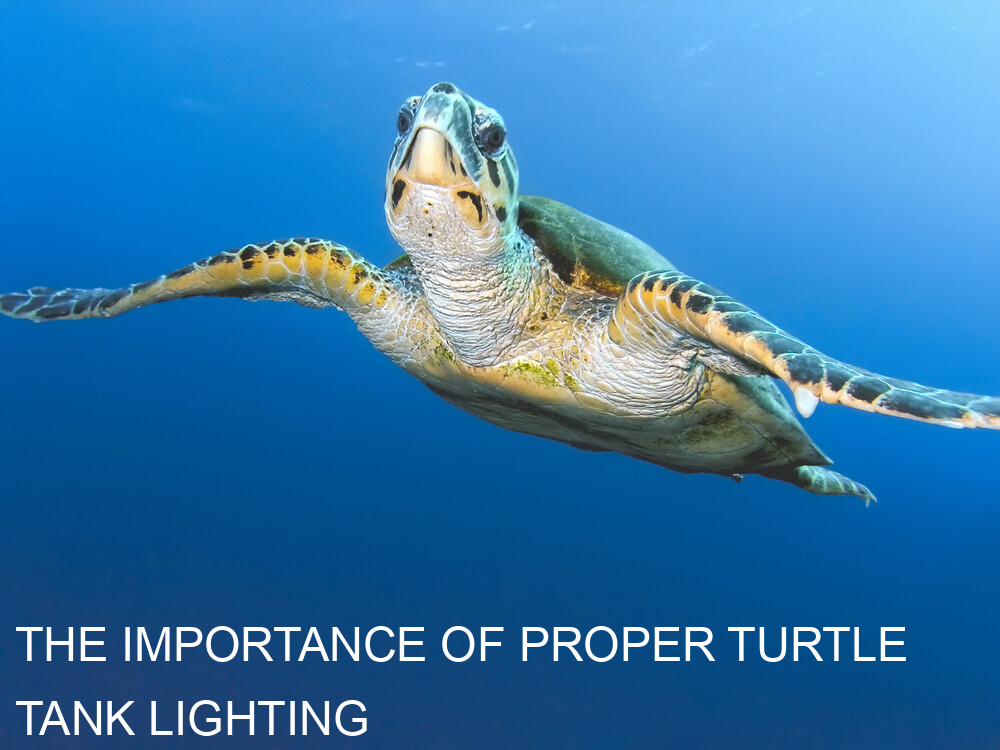When it comes to keeping turtles as pets, there are a variety of different options available. In fact, some experts estimate that more than 100 million individuals keep pet turtles worldwide. While they make great pets for many people and in the right circumstances, keeping them as a permanent fixture in your home can also present challenges.
Among other things, this is because most pet stores do not have enough space for all of their turtle tanks. As a result, owners need to be able to purchase an appropriate enclosure on their own if they want to continue caring for them as part of their family. Without proper lighting, these enclosures would be nothing more than useless storage spaces after all.
What kind of lighting do turtles need?
Turtles need a wide range of lighting to allow them to thrive. Depending on the species, they should be provided with natural or artificial light at all times. Some turtles, like the Eastern and Western painted turtles, need UVB rays that are only found in the sun. For other types of turtles, like diamondback terrapins and red-eared slider turtles, which can be kept in smaller tanks, fluorescent lights are often sufficient. These lights can also be paired with an artificial light source to provide additional lighting for some species.
For aquatic turtles that need UVB rays, it is recommended that they get between 10 and 20 minutes of sunlight per day. When using UVB rays as their main source of light, owners must also make sure that there is enough water flow around their tanks so as to not stress out their pets by creating too much heat.
Why do turtles need UVA and UVB light?
The reason many turtles need UVA and UVB light to survive is because it’s their primary source of vitamin D3. This is the same sunlight that humans use to make vitamin D3. Vitamin D3 is crucial for proper immune, nervous, skeletal, and bone development in turtles.
A lack of UV radiation can lead to illness and potentially even death of your pet turtle. For example, if a turtle doesn’t get enough sunlight, they may develop anemia as a result.
But that’s not all. The current level of UVB radiation at night can cause skin cancer on turtles if they don’t have adequate protection from the sun or from regular sunscreen application. For example, when reptiles are exposed to too much ultraviolet rays for too long, a melanoma may develop on their body (usually their head).
Should turtles always have light?
While turtles are nocturnal, they need to have appropriate lighting on a regular basis. This keeps them healthy and helps them live comfortably in their home environment. Thankfully, many pet stores sell turtle tanks that include built-in lighting systems. However, these lights are often not enough to properly light the tank, which means owners need to purchase additional lights on their own. Of course, if you’re unable to find the right lighting system for your tank, you can always create your own by using several fluorescent light bulbs or other types of light sources.
How far away should a turtle light be?
When looking for a turtle tank, one of the first things you’ll need is a light. It’s important to choose a light that is bright enough to adequately illuminate your turtle’s surroundings. The distance between the tank and the light should also be taken into account as well as what type of lighting you already have in your home.
The best place to start when buying a turtle tank is by measuring the length, width and height of your current enclosure. You can then take these measurements to find the right size lamp for your enclosure. For example, if you have an aquarium that measures 1 foot deep, 2 feet long, and 3 feet wide with an ambient room light around 10 feet away from it, then you would need a lamp with an 18-24 inch diameter or approximately 50 – 60 watts worth of power.
An LED bulb is one option that will provide enough light without using as much power. LEDs typically use 75 percent less power than incandescent bulbs while still producing comparable intensity levels. In general, LED bulbs typically last 25 times longer than incandescent bulbs which makes them an affordable option for people who want to save energy but still produce quality lighting for their turtles.














